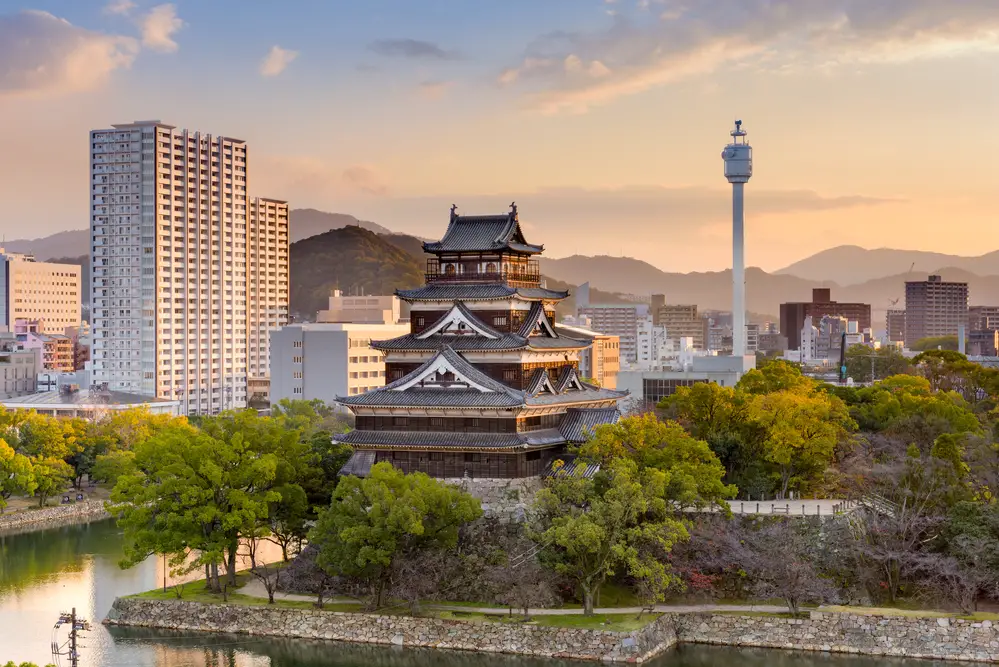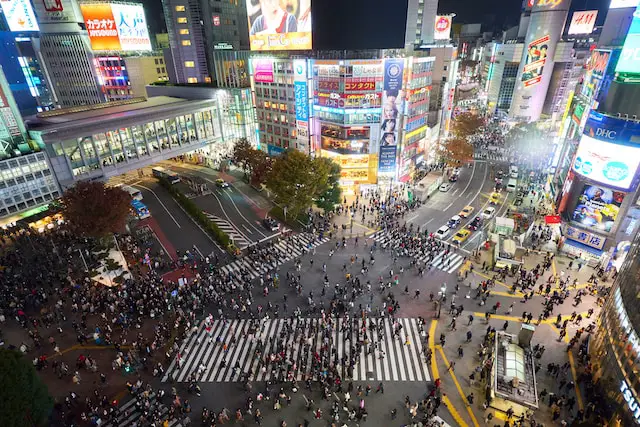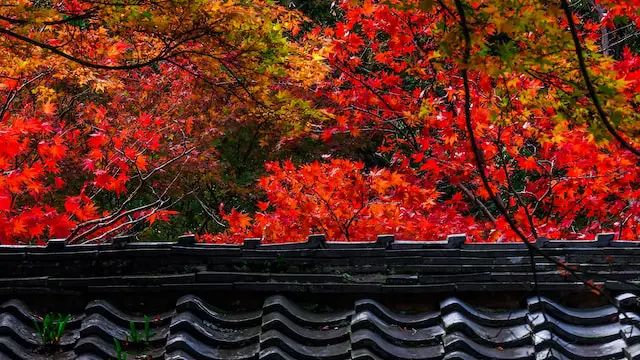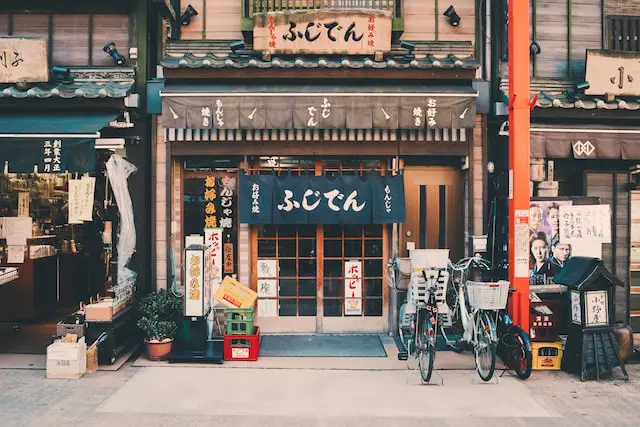As the morning sun pierces through the skyline of Hiroshima, it illuminates a city that is a tapestry woven with strands of poignant history and a testament to an indomitable spirit. Standing as a beacon of peace and a treasure trove of culinary wonders, Hiroshima has today risen from its ashes to establish itself as a must-visit destination for anyone seeking a rich cultural, gastronomic, and historical experience.
This metropolis harbors a past that invokes a deep sense of solemnity, standing as a witness to one of history’s darkest days. Yet, it breathes new life with its vibrant modernity and the warmth of its people. At the heart of its poignant historical narrative lies the Hiroshima Peace Memorial Park, a solemn remembrance of lives lost, and the majestic Miyajima Island, with its iconic Itsukushima Shrine that seems to float ethereally on the water at high tide.
Join us as we lift the veil on this unique city, where resilient sakura trees bloom each spring and where the past and present coexist in a profound balance. Let’s embark on this journey through Hiroshima, threading through its solemn history and indulging in its rich flavors to uncover the soul of this remarkable Japanese gem.
Exploring the Hiroshima Peace Memorial Park
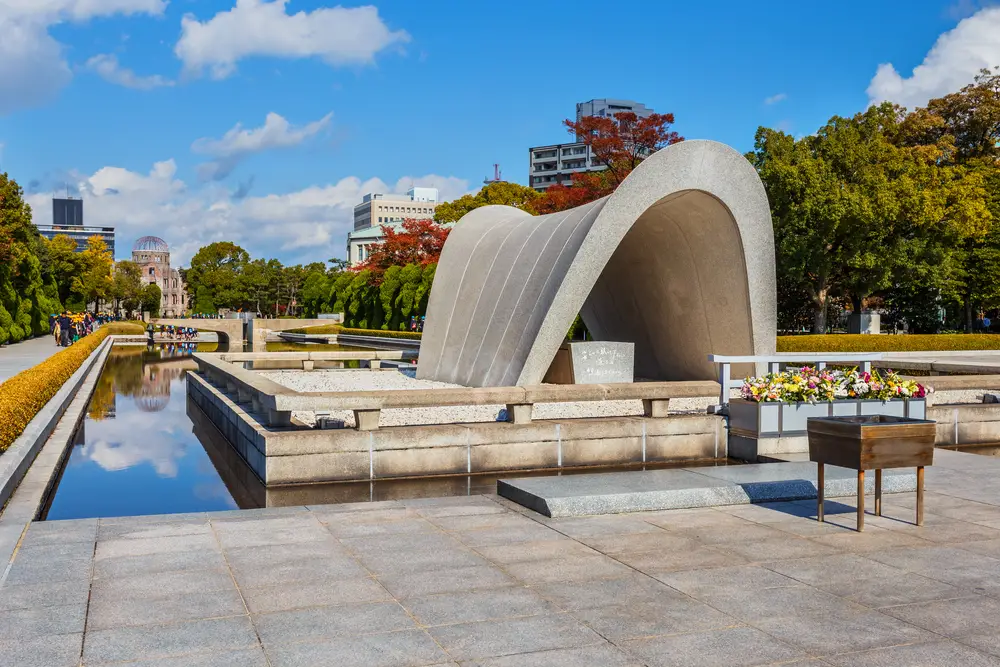
The heart of Hiroshima’s historical narrative beats in the solemn yet serene grounds of the Hiroshima Peace Memorial Park. This park stands as a poignant reminder of the tragic past and a beacon of hope for a peaceful future. Centrally located and easily accessible, visiting this sanctuary of contemplation is a must for any traveler.
The iconic Atomic Bomb Dome, skeletal and haunting, dominates the park’s landscape. Once the Hiroshima Prefectural Industrial Promotion Hall, the building’s remains now serve as a powerful symbol of the fateful day on August 6, 1945, when an atomic bomb changed the course of history. Preserved just as it was post-explosion, the Dome silently narrates a tale of destruction and the resilience of humanity.
A visit to the Hiroshima Peace Memorial Museum complements the outdoor memorial experience. Through the museum’s exhibits, visitors receive a detailed and emotional education on the events leading up to the bombing, the devastating impact on the city’s population, and the city’s remarkable recovery. It challenges us to think deeply about peace and the effects of war.
Among the numerous monuments in the park, the Children’s Peace Monument holds a special place in the hearts of many. Inspired by the story of Sadako Sasaki, a young girl who believed that folding one thousand paper cranes would grant her wish for recovery from radiation-induced leukemia, it is now a symbol of innocent victims of nuclear warfare and a message for peace.
As part of your hiroshima travel guide, we encourage you to pay homage to these landmarks not only to honor the past but to understand Hiroshima’s enduring commitment to peace and hope.
Taking a Spiritual Journey to Itsukushima Shrine on Miyajima
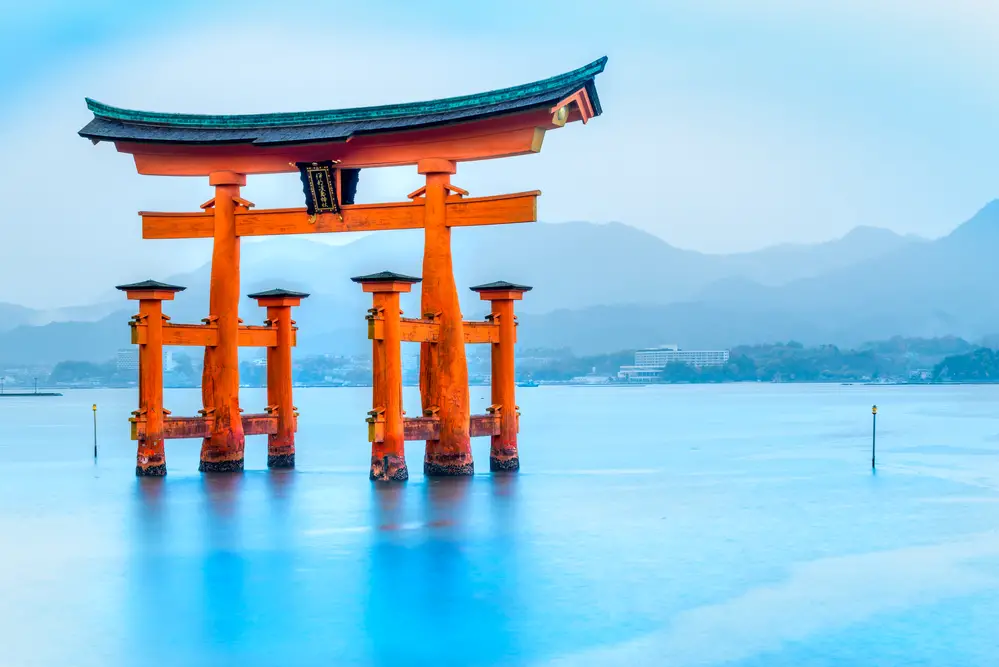
If you’re seeking an experience that captures both the mystical and natural beauty of Japan, a trip to the legendary Itsukushima Shrine on Miyajima Island is a must. This UNESCO World Heritage Site is renowned for its majestic floating torii gate, which at high tide seems to drift serenely upon the waters. The gate is not just a picture-perfect scene but a gateway that connects the spiritual world with the lives of the island’s visitors and worshippers.
For the best experience, time your visit to coincide with high tide, when the water envelops the base of the torii, creating an enchanting illusion of it floating. Scheduling your arrival slightly before the tide comes in allows you to observe the breathtaking transformation—a performance by nature that leaves onlookers spellbound. You can check the local tide charts or ask at your accommodation in Hiroshima for the ideal times.
Beyond the main attraction, Miyajima offers an array of activities for the adventurous and the contemplative alike. Hiking enthusiasts can ascend Mount Misen for panoramic views of the Seto Inland Sea, while history buffs can explore ancient temples and pagodas dotted across the island. Don’t be surprised if you encounter friendly deer along the way—they’re considered sacred and freely roam the island. Whether you’re soaking in the spiritual atmosphere or capturing the perfect photograph, Miyajima ensures a day filled with wonder and tranquility.
Culinary Delight: Sampling Hiroshima-style Okonomiyaki
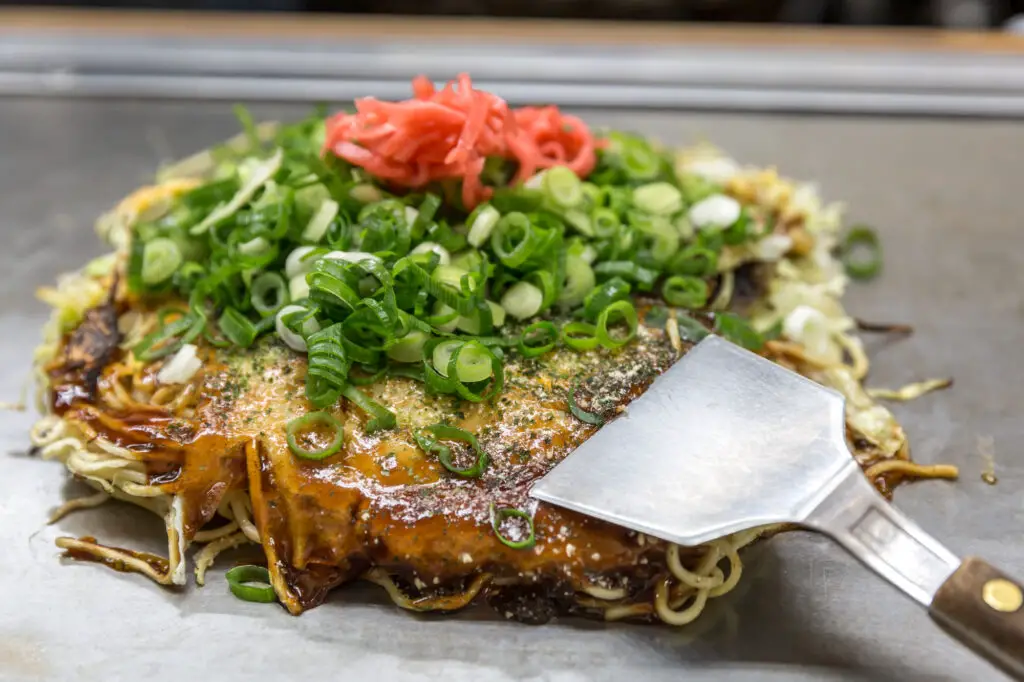
One cannot claim to have truly experienced Hiroshima without indulging in the local rendition of okonomiyaki, a flavorful Japanese savory pancake. Let your taste buds embark on a gastronomic journey with the Hiroshima-style okonomiyaki, which sets itself apart with its intricate layers of ingredients — a testament to the city’s culinary innovation.
As opposed to the Kansai style where ingredients are mixed together, Hiroshima’s version is characterized by its distinct layers, starting typically with a thin crepe-like base piled with an abundance of cabbage, bean sprouts, pork slices, seafood, and topped with noodles (either soba or udon), finished with a generous drizzle of okonomiyaki sauce, mayonnaise, and a flurry of green onions and bonito flakes.
For the ultimate okonomiyaki experience, venture to Micchan or Okonomi-mura, where the craft of these savory pancakes has been perfected over generations. Each bite encapsulates Hiroshima’s vigor, making it a must-try for any curious traveler.
Beyond okonomiyaki, be sure to savor other local specialties such as Momiji Manju, a delightful maple leaf-shaped cake typically filled with red bean paste, and Hiroshima’s famously fresh oysters, which can be enjoyed raw, grilled, or even deep-fried. It’s an epic adventure worthy of any traveler’s itinerary.
Enjoying Nature at Shukkeien Garden

As you meander away from the urbanity of Hiroshima, seeking solace in the whispers of nature, the Shukkeien Garden awaits you with its timeless grace. This Edo-period treasure, constructed in 1620, is a miniature garden universe. The name ‘Shukkeien’ translates to ‘shrunken-scenery garden’, and once you enter, you will understand why; it presents a microcosm of traditional Chinese landscape painting.
The garden boasts a central pond surrounded by various miniaturized sceneries, ranging from dainty valleys to majestic mountains, each meticulously crafted to perfection. As you stroll along the winding pathways, contemplate the careful craftsmanship required to maintain such delicate beauty. Hiroshima attractions often focus on their vibrant city life or deep historical roots; however, Shukkeien offers a contrasting sense of tranquility and escapism.
For a fully immersive experience, find your way to one of the tea houses that appear to float on the pond’s surface, enjoying a moment of Zen as you partake in a traditional tea ceremony experience. Take note: the teahouse rendezvous often requires an advance reservation, so plan accordingly. And, if you find yourself spellbound by a particular corner of these miniaturized vistas, you may wish to immortalize the moment through a photo or simply seated contemplation.
Whether it is the blush of cherry blossoms in spring or the fiery hues of maples in autumn, Shukkeien Garden adapts its charm to each season, offering a never-ending tableau. Like the city itself, this enchanting location is a testament to the resilience and continuous flourishing of Hiroshima. It is a symbolic reminder that beauty can sprout from adversity, and serenity can always be found within chaos.
Visiting the Mazda Museum
The tale of Mazda is a remarkable narrative of resilience and innovation, a story deeply woven into the fabric of Hiroshima’s history. This city, while notably recognized for its historical significance, is also home to Mazda, an automotive powerhouse known worldwide. A visit to the Mazda Museum offers a unique insight into the brand’s enduring legacy and its substantial contribution to the local economy.
As you step into the museum, you embark on a journey through Mazda’s evolution, from its early days as a cork-producing company to its rise as a global automobile giant. The museum leaves an indelible impression, not just with its showcase of historic car models that reveal the ingenuity of Mazda’s design but also with an exclusive tour of the factory’s assembly line – a rare glimpse into the precision and care that goes into every vehicle.
The museum’s meticulously organized exhibits provide a chronological narrative, beginning with the 1920 Toyo Kogyo Co., Ltd., moving through the development of the famed rotary engine and up to the latest breakthroughs in environmental technology. Each display is a testament to the commitment of the Mazda brand to overcoming challenges and pushing the boundaries of what’s possible in the automotive world.
While the museum tour is informative, it’s the practical experience of watching real cars come to life on the assembly line that often captures the imaginations of visitors. This excursion into the heart of Mazda’s operations not only highlights the company’s technological advancements but also its significant role in shaping Hiroshima’s post-war economic rise.
Excursion to Hiroshima Castle

The storied Hiroshima Castle, also fondly referred to as Carp Castle, stands as a testament to the city’s historical and cultural heritage. Reconstructed after its destruction during World War II, this castle now symbolizes Hiroshima’s resilience and makes for a compelling visit for history enthusiasts and casual tourists alike.
A tour of Hiroshima Castle offers an enriching journey back in time. Inside its walls, historical exhibits meticulously lay out the region’s samurai past, reflecting the era when feudal lords ruled over the lands. The artifacts and multimedia displays provide a comprehensive overview of not just the castle’s history, but also the broader historical tapestry of Japan.
Climbing to the top of the main keep, visitors are rewarded with panoramic views of the surrounding cityscape, which juxtapose the traditional architecture with the modern city below—a poignant reminder of the city’s journey from its feudal roots to today’s bustling metropolis.
While the castle’s exterior exudes an aura of majestic calm, it’s the allure of its interiors, where one can almost hear the whispers of ancient samurai, that truly enthralls. Whether you’re an avid historian, architecture lover, or simply in search of a beautiful escape, Hiroshima Castle offers a serene yet evocative piece of Japan’s vast historical puzzle.
Walking the Path of History: Atomic Bomb Survivor Narratives
In a city with deep historical wounds, there lies an opportunity to connect with the past through the powerful accounts of hibakusha, the survivors of the atomic bombings. Visiting Hiroshima offers an incomparable chance to hear these poignant survivor narratives first-hand. Venues such as the Hiroshima Peace Memorial Museum and other local peace events often facilitate sessions where survivors share their experiences.
The tales told by hibakusha are not merely stories of the past; they are living testimonies and a sobering reminder of the fragility of peace. The emotional gravity of their words can transform perspectives, fostering a deeper understanding of the harrowing events that unfolded over seven decades ago. These narratives are not only key to Hiroshima’s historical tapestry but are also crucial in the education of peace and the dangers of nuclear warfare to future generations.
Listening to a hibakusha recount their experiences can be an intense yet profound experience. While it challenges us to confront difficult truths, it is a necessary part of comprehending Hiroshima’s story of resilience and renewal. It’s a call to embrace empathy, to remember the human cost of war, and to continue the pursuit of a peaceful world.
The opportunity to learn from the survivors is a moving tribute to those who suffered and are no longer with us. As visitors, it is our responsibility to listen, to learn, and to carry their messages of peace beyond the boundaries of Hiroshima. Their narratives are a powerful draw for those seeking a deeper connection with the history imbued in Hiroshima’s modern landscape.
Conclusion
Hiroshima’s legacy, a tapestry of resilience and beauty etched into its streets and the hearts of its people, beckons travelers from all corners of the globe. This city, once marred by tragedy, now stands as a monument to peace and rebirth, offering a poignant yet uplifting journey for all who tread its paths.
As you traverse from the deeply moving Hiroshima Peace Memorial Park to the serene grandeur of Itsukushima Shrine, and from the delightful bursts of flavor in Hiroshima-style okonomiyaki to the tranquil escape of Shukkeien Garden, Hiroshima unfolds as a multifaceted gem waiting to be discovered. The warm hospitality encountered in each corner of the city only enriches this experience, ensuring that every moment spent here is as welcoming as it is fascinating.
So, whether you’re a history buff, a culinary connoisseur, or a seeker of cultural immersion, include Hiroshima in your travel plans. Don’t just take this journey for its monumental past; embark on it for the cultural richness that thrives today. And when you do, share your experiences, for every story contributes to the enduring spirit of this remarkable city.
“`

